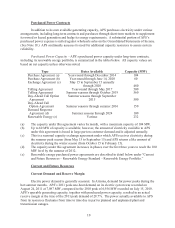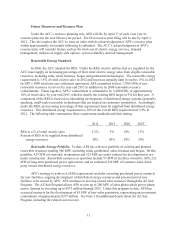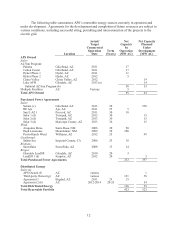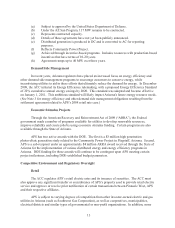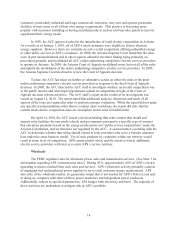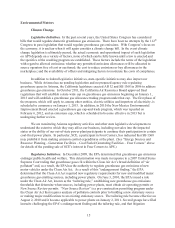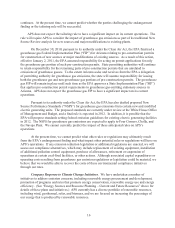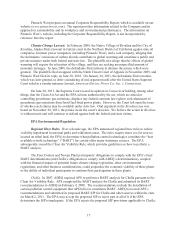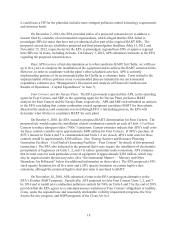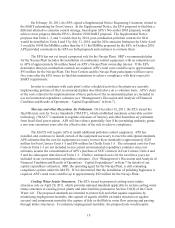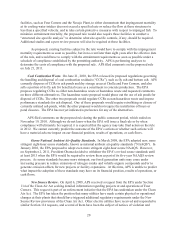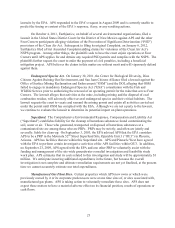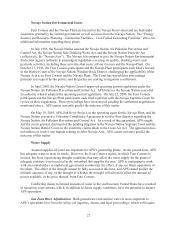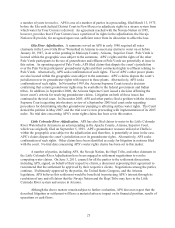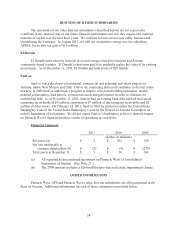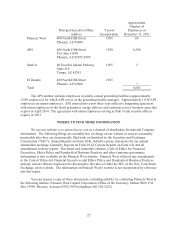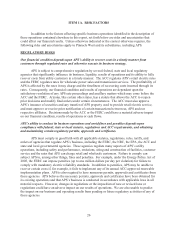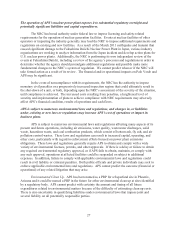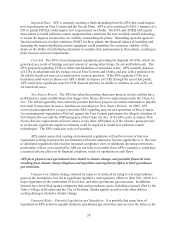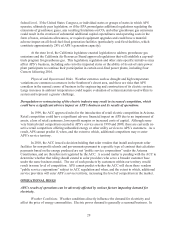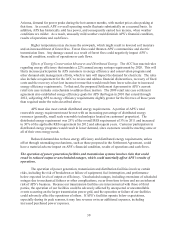APS 2011 Annual Report Download - page 44
Download and view the complete annual report
Please find page 44 of the 2011 APS annual report below. You can navigate through the pages in the report by either clicking on the pages listed below, or by using the keyword search tool below to find specific information within the annual report.20
facilities, such as Four Corners and the Navajo Plant, to either demonstrate that impingement mortality
at its cooling water intakes does not exceed a specified rate or reduce the flow at those structures to
less than a specified velocity, and to take certain protective measures with respect to impinged fish. To
minimize entrainment mortality, the proposed rule would also require these facilities to conduct a
“structured site-specific analysis” to determine what site-specific controls, if any, should be required.
Additional studies and a peer review process will also be required at these facilities.
As proposed, existing facilities subject to the rule would have to comply with the impingement
mortality requirements as soon as possible, but in no event later than eight years after the effective date
of the rule, and would have to comply with the entrainment requirements as soon as possible under a
schedule of compliance established by the permitting authority. APS is performing analyses to
determine the costs of compliance with the proposed rule. APS filed comments on the proposed rule
on July 21, 2011.
Coal Combustion Waste. On June 21, 2010, the EPA released its proposed regulations governing
the handling and disposal of coal combustion residuals (“CCRs”), such as fly ash and bottom ash. APS
currently disposes of CCRs in ash ponds and dry storage areas at Cholla and Four Corners, and also
sells a portion of its fly ash for beneficial reuse as a constituent in concrete production. The EPA
proposes regulating CCRs as either non-hazardous waste or hazardous waste and requested comments
on three different alternatives. The hazardous waste proposal would phase out the use of ash ponds for
disposal of CCRs. The other two proposals would regulate CCRs as non-hazardous waste and impose
performance standards for ash disposal. One of these proposals would require retrofitting or closure of
currently unlined ash ponds, while the other proposal would not require the installation of liners or
pond closures. The EPA has not yet indicated a preference for any of the alternatives.
APS filed comments on the proposed rule during the public comment period, which ended on
November 19, 2010. Although we do not know when the EPA will issue a final rule or by when
compliance will ultimately be required, it is expected that the agency may take final action on the rule
in 2012. We cannot currently predict the outcome of the EPA’s actions or whether such actions will
have a material adverse impact on our financial position, results of operations, or cash flows.
Ozone National Ambient Air Quality Standards. In March 2008, the EPA adopted new, more
stringent eight-hour ozone standards, known as national ambient air quality standards (“NAAQS”). In
January 2010, the EPA proposed to adopt even more stringent eight-hour ozone NAAQS. However,
on September 2, 2011, President Obama decided to withdraw the EPA’s revised ozone standards until
at least 2013 when the EPA would be required to review them as part of its five-year NAAQS review
process. As ozone standards become more stringent, our fossil generation units may come under
increasing pressure to reduce emissions of nitrogen oxides and volatile organic compounds and/or to
generate emission offsets for new projects or facility expansions. At this time, APS is unable to predict
what impact the adoption of these standards may have on its financial position, results of operations, or
cash flows.
New Source Review. On April 6, 2009, APS received a request from the EPA under Section
114 of the Clean Air Act seeking detailed information regarding projects at and operations of Four
Corners. This request is part of an enforcement initiative that the EPA has undertaken under the Clean
Air Act. The EPA has taken the position that many utilities have made certain physical or operational
changes at their plants that should have triggered additional regulatory requirements under the New
Source Review provisions of the Clean Air Act. Other electric utilities have received and responded to
similar Section 114 requests, and several of them have been the subject of notices of violation and


